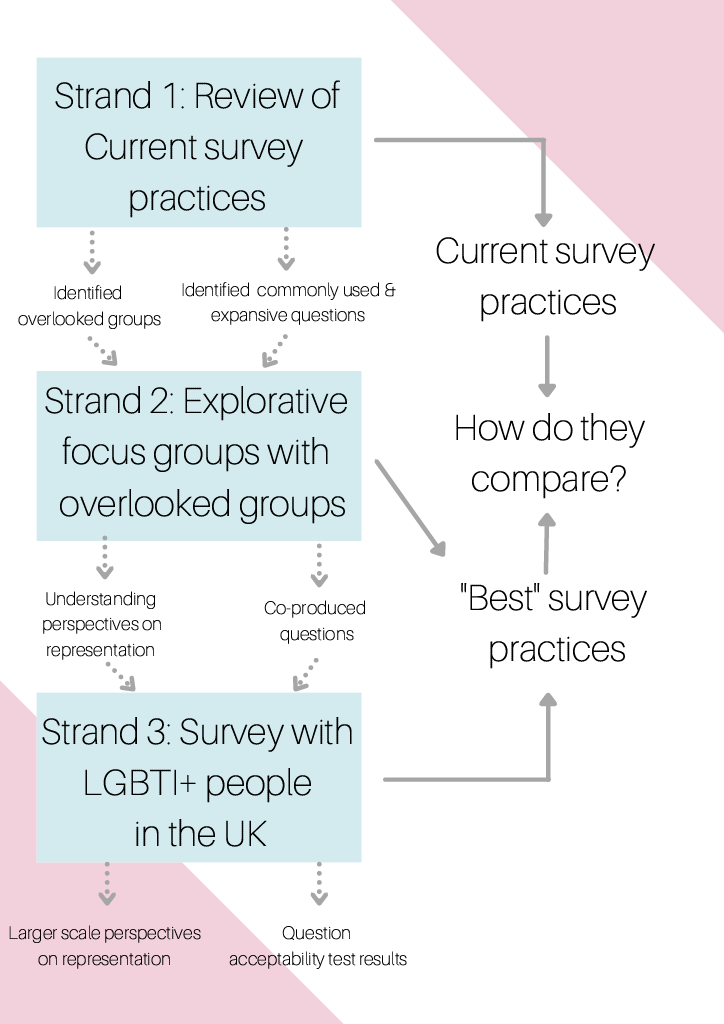Survey: Representing differences of sex, gender and sexuality in UK population surveys
Published:

Survey Link! Ends on July 2nd 2021
The third and final strand of my research has begun and I need your help. My research aims to find out how differences of sex, gender and sexuality should be represented in UK population surveys. For the final strand of my research, I am surveying people ages 16 and over who live in the UK and are part of the LGBTI+ community. The survey asks for your perspectives on what information about your sex, gender or sexuality should be recorded. It features questions designed by people whose relationship to sex, gender or sexuality is usually overlooked by UK censuses. You will have the opportunity to share your perspectives on these questions and help identify if they would be good alternatives to current survey practices.
The above diagram depicts my research process. The survey is part of Strand 3. In Strand 2 I engaged with 4 different overlooked groups that were identified by reviewing current survey practices they were:
People with variations of sex characteristics (often referred to as intersex people or people with differences of sex development)
People whose gender identities (or lack thereof) are not completely represented by the categories of man or woman (often referred to as non-binary people)
People who do not identify with their sex assigned at birth (often referred to as trans people)
Anyone who does not identify as only heterosexual/straight, gay, lesbian or bisexual (for example: asexual, aromantic, queer, pansexual and polyamorous people)
In Strand 3’s survey I want to continue to engage with these groups while also talking to the wider LGBTI+ community. This is due to the fact that although lesbian, gay and bisexual people are occasionally represented in population surveys if there is no sexuality question, they are not the assumed norm unlike straight people. The purpose of the survey is to see if the perspectives shared by the Strand 2 focus group participants are held by a larger group. It also gives the opportunity to test the “ideal” questions designed by the focus group participants.
The survey will be used to construct an idea of best survey practise for representing differences of sex, gender and sexuality in the UK. I will then compare that to what is currently done to produce recommendations on how to improve upon our current approaches to asking about sex, gender and sexuality. The overall objective of this research is to further respectful representation of marginalised groups in an attempt to produce data that will help us understand our communities and meet our needs.


